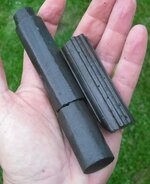romeo-1
Gold Member
Where's Homer Simpson...inanimate carbon rod?
Found these this evening in a farmer's field...they are very light weight...what are they used for?
Found these this evening in a farmer's field...they are very light weight...what are they used for?







